Much as I enjoy reading other people’s book blogs, and much as admire their reading stamina, memory for detail and ability to present synopsis and opinion succinctly and in an entertaining fashion, I’m rather enjoying putting together my long-winded rambles which seem to say a great deal less in a great many more words. I’ll add the occasional review, especially of a classic, but rambling, rather than reviewing, suits me better. I enjoy the journey, though for anyone with the time and stamina to indulge me and follow along, a cup of tea or beverage of choice might be fortifying…

For many, there’s pleasure and satisfaction in eating seasonally. Reading seasonally adds flavour to my literary diet too. Hence another wintry ramble, this time with a young writer I admire and whose books transported me from our monochrome winter skies into a world of scintillating snow and ice and unfathomable myth.
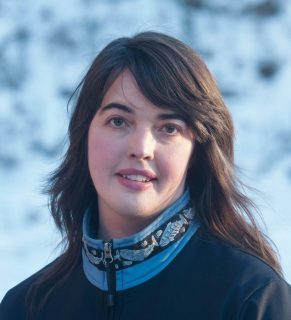
As I closed the covers of Winter Holiday, I turned to a personal favourite for a re-read: Eowyn Ivey’s ‘The Snow Child’. Perhaps somewhere in the back of my mind I had recalled that The Snow Child had been inspired by ‘Snegurochka’, a Russian folktale which also had also inspired Arthur Ransome (the author of Winter Holiday) to produce his own version of the tale which he entitled, ‘The Little Daughter of the Snow’. It’s reproduced at the end of The Snow Child. It pleased me enormously to be reminded of this connection. A little more spice is added to the literary melting pot when one book flows into the next.
“Without Mr Ransome, I would never have created my own snow child.”
Eowyn Ivey

Fortuitous connections aside, my conscious reason for re-reading The Snow Child was that I had been waiting for the depths of winter before reading Eowyn’s latest book. ‘To the Bright Edge of the World’ was published last August. No matter how eager I was to read it, it felt totally wrong to read it in the summer; it had to wait for the arrival of winter. No matter that a relatively small portion of the book is set in the winter months: Alaska evokes images of open spaces; of wild beauty; rugged, challenging landscapes and long, dark, savage winters. I needed to experience it in the appropriate season.
“November was here, and it frightened her because she knew what it brought—cold upon the valley like a coming death, glacial wind through the cracks between the cabin logs. But most of all, darkness. Darkness so complete even the pale-lit hours would be choked.”
I loved The Snow Child when I first read it in 2013. To make a fair comparison between this book – which became a Pulitzer finalist, and her subsequent novel – also shortlisted for various prizes, I wanted to read both in quick succession.

And so, whilst our own wintry days were short and for the most part grey and uneventful, I was immersed in long winters – filled with brief, snowbound days of glacial temperatures, and short summers – filled with long, dazzling days of vast skies, wildflowers and majestic mountains. All this, in a land where every day was a battle with nature, with the elements and with oneself.
“She was several feet from safe ground when she allowed herself to stop and peer down between her boots. It was like walking on glass. She could see granite rocks beneath the moving, dark turquoise water. A yellow leaf floated by, and she imagined herself swept alongside it and briefly looking up through the remarkably clear ice. Before the water filled her lungs, would she be able to see the sky?”
These books have in common the might and majesty of the landscape – which pours from the pages like the river around which the stories are set. They are also replete with myth and magic. At times the pages are filled with the unexplained, just as the air is filled with whirling snowflakes and the river with floating leaves. Legend seems as opaque, obtuse and obstructive as the ice-covered river. Reality – like the rushing water beneath the ice – is, at such times, unreachable. And it is best not to try.
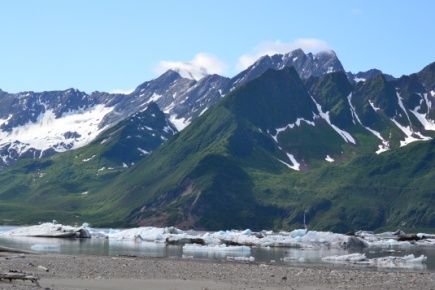
If the soul of the books is Alaska, both natural and mythic, the heart of each is an exploration of love and commitment: of what it is to be connected. The Snow Child tells the story of Jack and Mabel; To the Bright Edge of the World the tale of Allen and Sophie.

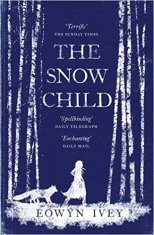
In 1920, tempted by the attraction of land and isolation, Jack and Mabel move to Alaska from the fertile lands of Pennsylvania. They seek a new life, away from the sympathy, kindness and pity of their loving relatives. Ten years earlier, Jack and Mabel had lost their only child at birth. Grief kept them apart from the world – and from each other.
“It would be a hard life, but it would be theirs alone. Here at the world’s edge, far from everything familiar and safe, they would build a new home in the wilderness and do it as partners.”
Life in Alaska proved much harder than either of them had imagined. Instead of bringing them together, they are pulled further apart. As the story opens, Mabel has reached her lowest ebb.
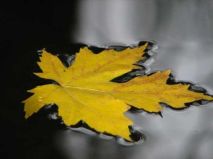
“The days diminished. Light lasted just six hours, and it was a feeble light. Mabel organized her hours into patterns – wash, mend, cook, wash, mend, cook – and tried not to imagine floating beneath the ice like a yellow leaf.”
One wintry night, in the beauty of a silent snowstorm, and amidst joy and carefree laughter, they make a snow girl. A weary, worn-down middle-aged couple forget life’s burdens and their own loneliness and for the briefest of moments they find each other again. The snow girl doesn’t stay in the yard for long. But there are footsteps leading into the forest. And one day there is Faina.
 “What happened in that cold dark, when frost formed a halo in the child’s straw hair and snowflake turned to flesh and bone? Was it the way the children’s book showed, warmth spreading down through the cold, brow then cheeks, throat then lungs, warm flesh separating from snow and frozen earth? The exact science of one molecule transformed into another-that Mabel could not explain, but then again she couldn’t explain how a fetus formed in the womb, cells becoming beating heart and hoping soul.”
“What happened in that cold dark, when frost formed a halo in the child’s straw hair and snowflake turned to flesh and bone? Was it the way the children’s book showed, warmth spreading down through the cold, brow then cheeks, throat then lungs, warm flesh separating from snow and frozen earth? The exact science of one molecule transformed into another-that Mabel could not explain, but then again she couldn’t explain how a fetus formed in the womb, cells becoming beating heart and hoping soul.”

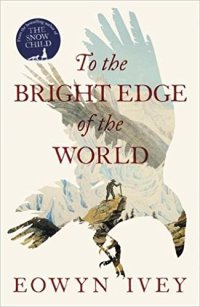
To the Bright Edge of the World is set in the same region of Alaska: around the fictional Wolverine River, which is based on the Copper River close to where Eowyn Ivey lives. The story however, takes place some years earlier, in 1885, when Colonel Allen Forrester leads a small expeditionary force up the river into unexplored territory. This is inspired by a real-life expedition in that year led by Lt. Henry T. Allen, which travelled up the Copper River into unchartered Alaska and then westward: a 1,500-mile trek through the wilderness.
But the expedition is only one part of the story. As Colonel Forrester leads his small band of men through treacherous terrain, battling the elements and feeling his way into relationship with the Indians he encounters, we also follow the story of his young wife, Sophie, waiting for him at the army barracks with little communication and even less certainty of when or if her husband will return alive.
“It is remarkable how we go on. All that we come to know and witness and endure, yet our hearts keep beating, our faith persists.”

“When she slowly straightened, the land was vast before her. The sun was setting down the river, casting a cold pink hue along the white-capped mountains that framed both sides of the valley. Upriver, the willow shrubs and gravel bars, the spruce forests and low-lying poplar stands, swelled to the mountains in steely blue. No fields or fences, homes or roads; not a single living soul as far as she could see in any direction. Only wilderness.”

The Snow Child is written as a straightforward, chronologically ordered, third-person narrative. To the Bright Edge of the World has a more complicated structure. Essentially it is an epistolary novel, but it’s more than just a collection of letters. There are military reports and diary extracts – from a number of different diaries – with various additional documents, fragments and photographs added to the mix. And they are mixed up. The order seems random; it’s certainly not chronological. I found this frustrating at first, reading as I was on a Kindle which made it more difficult to flip back and forth and keep track of dates and voices. At one point not long into the book, I found myself muttering darkly: ‘It feels like a box of memorabilia has been upended and I’m randomly shuffling through it.’ And that is exactly what’s happening.
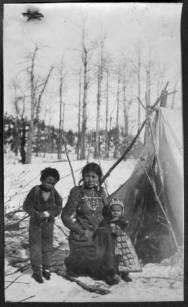
The documents, diaries and letters of the past are being presented alongside a contemporary correspondence between a modern-day descendant of Allen and Sophie’s and a young Alaskan-born curator of a museum in the Wolverine area. It is this current exchange of letters that is chronological: the papers that accompany it are not, although the order in which they are introduced has of course been carefully considered and once I had adjusted, it wasn’t difficult to follow Sophie and Allen’s story.

“Kings Glacier is a wall of ice with a vertical reach of at least 300 feet. There are rough fractures where, in warmer months, large sections must break away, crash into the river. Some cracks stretch higher than a city building. Such a falling mass would surely sink a row boat, kill a man.
The shades of the ice hypnotize – Tillman and I stood beside each other, stared, speechless for some time. Even from this opposite shore of the river, a man is pulled into the blue of the deepest fissures. Within are the hues of cold itself. The sight chills me, yet I thirst for more.”

The Snow Child combines the brutish reality of life on a wilderness frontier with the mystical telling of a tale that defies reality. We are offered possibilities, but the full knowledge of Faina – of who she is, where she came from, where she goes, how she lives – are not made known. It is for the reader to decide, or perhaps to choose to accept the mystery just as we are given it and consider that the esoteric may be as much a part of Alaska’s soul as the rivers, the mountains and the long dark winters. The story is a celebration of the beauty and magnificence of the setting and its wildlife, as well as its cast of characters – which people it with courage, dignity and heartwarming humour. In the Alaska that Jack and Mabel come to know, and where they eventually find solace and peace, the natural world collides with the mythic and the mundane.
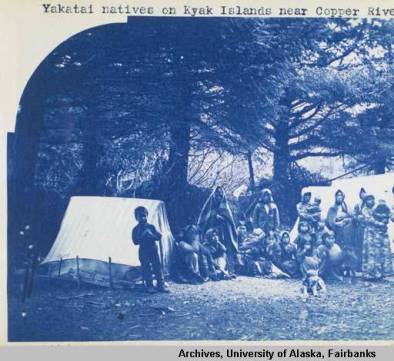
To the Bright Edge of the World presents as more concrete and factual, seemingly more grounded in reality. The inclusion of old photographs make it difficult at times not to assume that these characters really lived. But it too, is sprinkled throughout with instances of the esoteric. It holds a mirror to the lives of the native peoples who have already a history and a culture in this severe and uncompromising land which stretches back well beyond the arrival of white explorers. The expedition encounters numerous instances of the unexplained, some of which impact directly not only on Allen and his men in the wilderness but on Sophie waiting resolutely in the barracks.

“Yet it continued with its steady and hard rapping, and the sound became more and more horrible. I feared the bird would crack the pane…. it’s eye turned steadily towards me, there could be no doubt…. It looked nothing like a bird eye, but rather that of a mammal. More to the point, a human.”
Some of what occurs may appear outlandish, bizarre or just plain nonsensical, yet our culture too, has its stories, myths and legends, which centuries of familiarity have made smooth and less startling.
“I’m just passing along a story I heard told. Make of it what you will.
It’s ridiculous! Pruitt said.
It all amused the trapper.
So, he said, – a woman from a rib you’ll have, but not from a goose?”
Perhaps we are too immersed now in modern trappings to identify with such instances beyond thinking of them as ancient stories from a past too distant to touch us. On the edge of the known world in 1885, and even in 1920, perhaps the possibilities and realities of those stories were more readily felt.
“It takes a kind of arrogance to think everything in the world can be measured and weighed with our scientific instruments. The Colonel started out with these sorts of assumptions, and as you will see, it did not serve him well.”
To the Bright Edge of the World illuminates not only the esoteric strands of native culture but also the historic. Even as he negotiates a passage through these lands, relying frequently as he does upon the goodwill and generosity of the Indians, Allen knows what will follow in his wake and what the consequences will be for these native people and their ancient culture. And by the time Jack and Mabel arrive, carving out their small plot of Alaskan wilderness some decades later, there is no mention of the old nomadic way of life which had once been the way of the original custodians of the land.
![]()
Immediately after Eowyn’s novels, I read (and enjoyed) another book set in wintry climes: “The Tenderness of Wolves” by Stef Penney. I mention it only because, having won the Costa Book of the Year when it was published in 2006, there seemed to be a consensus that it was a good thing that Stef Penney chose to write something entirely different for her second book: that this ameliorated the problem of the awkward second novel after a hugely successful first.
Eowyn Ivey has done the opposite. Both her books are steeped in the land in which she lives and clearly loves. I hope she continues to write about this place to which she is so deeply connected. She is a young author at the beginning of her writing career but I find myself thinking of her books alongside those of two of my most admired and much-loved authors: Steinbeck and Du Maurier.
I’m not making a comparison of these writers: of their books or abilities or longevity. I see simply three writers who share with their readers their love for language and for a sense of place and culture that is embedded in each of their hearts. They tell stories, as all fiction writers do. But they share those stories with a love and a passion that illuminates in simple, lyrical prose and which paints pictures as vividly as an artist using a brush.
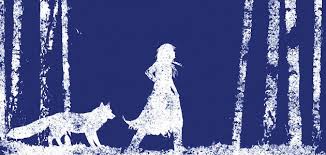


I am ashamed to say that I’ve had The Snow Child for more than 2 years on my reading pile and never got around to it. I have to make room for it somehow. I am fascinated by the frozen expanses of the North.
LikeLiked by 1 person
It’s an easy read really. Maybe one day when you need a break from escapist crime fiction 🙂
LikeLiked by 1 person
I enjoyed your rambles, and fortunately had just poured a cup of tea, so was able to fortify myself along the journey. 😉 I have a copy of the audiobook of The Snow Child but, in truth, the more I heard about it, the less I felt inclined to read it – I don’t do very well with esoteric, I fear. However, your enthusiasm for her writing makes me feel I should put the book back on the TBR…
LikeLiked by 1 person
FictionFan, I suspect it would not be your sort of thing. But you have me wondering now about how it would come across on audio. Who’s reading your version?
LikeLike
Debra Monk, which I must say means nothing to me, and from the sample I’m not sure about her voice but sometimes it just takes me a while to get tuned in to an accent.
LikeLiked by 1 person
I like your ramblings very much – keep on keeping on! 🙂 I also loved The Snow Child and read The Tenderness of Wolves just after it won the Costa. I’ve been intrigued by your post because I was thinking of reading Eowyn’s second book, but the other reviews I have come across put me off. Yours, on the other hand, suggest very much that it might be worth a go! 🙂
LikeLiked by 1 person
Thank you, Liz! Her second book is very different in many ways. I think it’s a book that grows on you. A more ambitious book of course, which is as it should be. I didn’t warm to the characters as much and there is less humour. But certainly worth a go. I know I will read it again and I’m confident I’ll appreciate it all the more second time around 🙂
LikeLiked by 1 person
That all sounds v interesting. I have added it to my wish list! 🙂
LikeLike
Very interesting and not rambly at all! Would you categorize these books as “magical realism”? It’s not a genre I usually lean toward but maybe I should re-think that . . .
LikeLiked by 1 person
Kerry, opinions seem divided on whether it falls into the magical realism genre. I think it does – but her books are not heavyweight; I don’t have them on a par with Marquez for example. There’s a whimsical charm to them – and for me at least, a wonderful sense of place. (All of which I did not include in the post: the pleasures of rambling rather than reviewing 😉 )
LikeLiked by 1 person
I well remember reading the Snow Child in 2013, Sandra- how beautiful a lot of it was, but how it was too much for me- too fey, too esoteric, and I fear Ivey’s second book would be the same. But it was interesting to hear your views on it, and to taste a morsel or two!
Your writing is beautiful too;
maybe one day , when you’ve been fully absorbed into the Cornish air, you’ll write a novel of equal delicacy.
xx
LikeLiked by 1 person
Yes, I remember it not being your type of book, Pat, and I think you’re right that her follow-up wouldn’t suit you either. I did go on to read The Tenderness of Wolves as I mentioned (your copy) and thoroughly enjoyed that too – a proper ‘story’, without the esoteric but still in the snowy wilderness (albeit Canada rather than Alaska).
(Currently indulging in Daphne…) xx
LikeLike
I love reading your rambles, Sandra! I read The Snow Child when it was first published and remember really enjoying it – your post has reminded me of the reasons why I liked it so much. To the Bright Edge of the World sounded less appealing to me and I still haven’t read it, but I’ll get to it eventually!
LikeLiked by 1 person
Helen, I know what you mean; I had reservations too. It’s less accessible, less immediate. But I’m very glad to have read it and will read it again 🙂
LikeLike
J > A very interesting and thought-provoking review(s)! To the Bright Edge appeals : I think I’ll see if i can get it on Amazon. Your reviews are Very helpful!
LikeLiked by 1 person
You’re very kind! Keep in mind though, that my reviews are very personalised! If you read it, I’d love to hear your thoughts 🙂
LikeLiked by 1 person
Hi, I’m a french young guy, I have a amateur photoblog and I want do a partnership with your blog cause it’s a very nice blog. My blog is elijah.architectovore.net
My email: architectovore@gmail.com
LikeLike
Hi Elijah, thanks for visiting. You have some great photos on your blog. I love Paris!
LikeLike
And for the exchange of links ?
LikeLike
Elijah, you are welcome to link to my blog if you wish. I’m not adding any more blogs to my blogroll at the moment so as it wouldn’t be an exchange of links, you may prefer to pass at this time.
LikeLike
I loved both of these books and have really enjoyed reading your blog post about them. They were both magical tales and I’ll never forget them. The author is quite unique and I’m looking forward to what she does next.
LikeLiked by 1 person
Me too, Marjorie!
LikeLike
Ramble on! I enjoy reading your thoughts about the books you’ve read. These books sound fantastic to me.
LikeLiked by 1 person
An interesting thought provoking review. I loved Snow Child, cherishing each page, like a child reading a favourite story. I also enjoyed The Tenderness of Wolves and are looking forward to Eowyn’s Edge of the World..’ your review has inspired me to read it!
LikeLiked by 1 person
I think you should definitely try it! Different from each of the others mentioned here but fascinating, and in its way, haunting. I shall definitely come back to it – and probably enjoy it more the second time around. (Definitely a winter read though, in my opinion.)
LikeLike